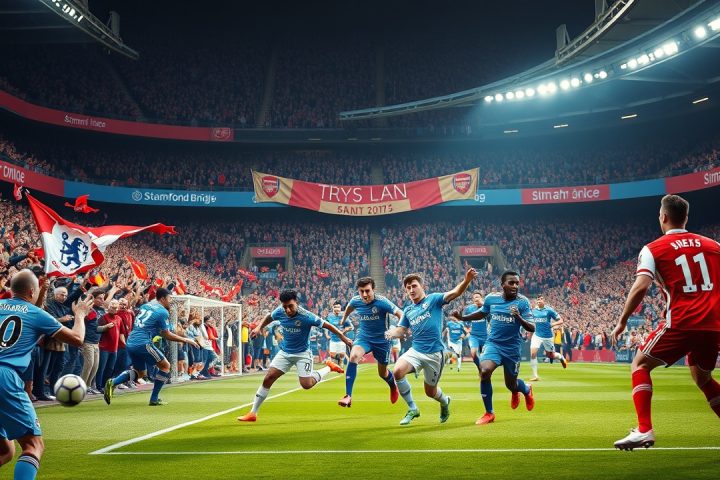Transfer Window Overview
The closing of the transfer window marks a critical juncture for clubs in Europe, just as the inaugural matches of the Club World Cup unfold. This year’s transfer period saw teams associated with the tournament receive a unique chance to make swift acquisitions, with windows opening from June 1 and reopening on June 16 in the Premier League, before the broader European market kicks off on July 1 and wraps up on September 1.
Key Player Acquisitions
In recent days, a flurry of activity has emerged from some of the world’s wealthiest football establishments. Notable among them, Liverpool, Real Madrid, and Manchester City have all made high-profile signings. Chelsea continues its trend of recruitment, bringing in players as part of its overarching strategy, while Manchester United remains steadfast in its approach amid ongoing scrutiny.
Liverpool’s Investments
Liverpool, fresh off a triumph in the Premier League, has been proactive in strengthening its roster. To date, the club has officially acquired right wing-back Jeremie Frimpong from Bayer Leverkusen for a fee of €40 million and is reportedly closing in on a staggering deal for 22-year-old midfielder Florian Wirtz. This transaction could peak at €136 million should performance-related add-ons materialize. The club is also likely to add Bournemouth left back Milos Kerkez to its ranks. This significant outlay—around €200 million for three players—highlights Liverpool’s willingness to invest, particularly in key positions, contravening their relative financial constraints compared to rivals like Manchester City and PSG.
Historically, Liverpool has had successful big-money signings, breaking records for both a defender and goalkeeper when they brought in Virgil van Dijk and Alisson Becker. The club appears confident that Wirtz can reflect similar potential, particularly given his age and role in the team.
However, securing such high-profile talent comes with inherent risks; injuries and adjustments to the Premier League pace can derail even the most promising acquisitions.
Liverpool’s fiscal strategies suggest a long-term vision that seeks to blend immediate competitiveness with future resilience, especially as key players like Mohamed Salah and Van Dijk edge closer to the twilight of their careers.
Manchester City and Real Madrid’s Strategies
Meanwhile, Manchester City has tailored its strategy to enhance attacking prowess, signing midfielder Tijjani Reijnders, full-back Rayan Aït-Nouri, and offensive force Rayan Cherki for substantial fees totaling approximately €128 million. In a bid to remedy potential defensive frailties, these acquisitions emphasize offensive contributions but raise concerns about ongoing defensive solidity. The team’s tactics appear to lean towards dominating possession while aiming to bolster goal-scoring abilities, yet it raises questions about their effectiveness once they lose control of the ball—an issue that plagued them in the previous season.
Real Madrid has also made waves in this transfer season, securing right back Trent Alexander-Arnold, famed young center back Dean Huijsen, and promising 17-year-old Franco Mastantuono—each for notable release clause fees. This aggressive recruitment reflects Madrid’s unparalleled financial muscle and allure for emerging talent in football—
their positioning as a ‘dream club’ is helping them navigate signings with apparent ease.
Chelsea’s Recruitment Approach
Given the current landscape, Chelsea appears to be revolutionizing its approach, characterized by signings like Liam Delap, who joined from Ipswich Town for €35.5 million. Such decisions highlight a focus on undervalued players as they gradually shape a squad that lacks clear synergy. The risk of building a team from young, raw talents leaves unresolved questions about how these pieces will fit together on the pitch.
Manchester United’s Transition
Finally, Manchester United is navigating its own transition under new ownership, focusing on long-term growth as it struggles to compete at the highest level. The recent decision to replace Alejandro Garnacho with Matheus Cunha for a hefty transfer fee raises eyebrows. While the institutional hope is for a brighter future, concerns linger over maintaining a sustainable culture and a coherent vision that transcends managerial changes.
Conclusion
As teams finalize their rosters and prepare for the upcoming season, the moves made in this early transfer window provide valuable insights into each club’s strategic ambitions. Liverpool’s ambition, City’s strategic purchases, Madrid’s dominance in acquisition, and Chelsea’s haphazard focus each point to a rapidly evolving football landscape where adaptability might spell the difference between success and mediocrity.




